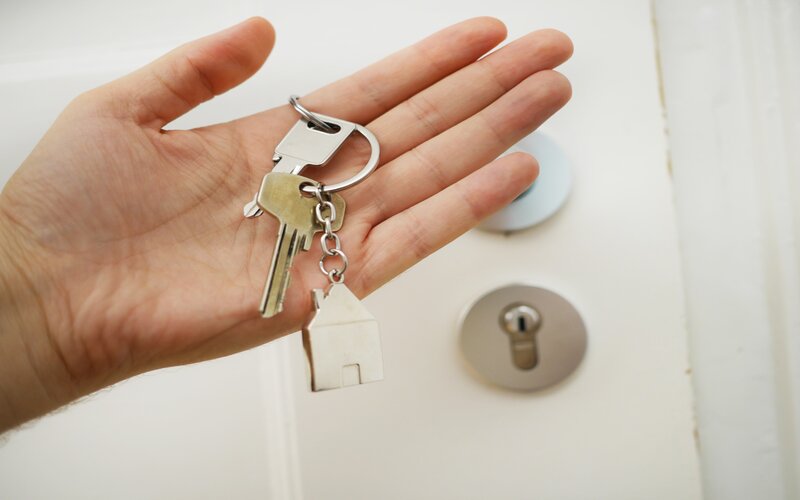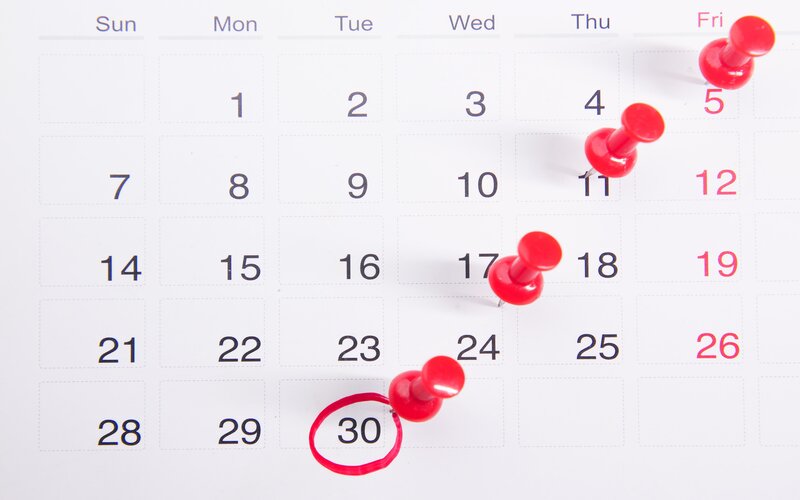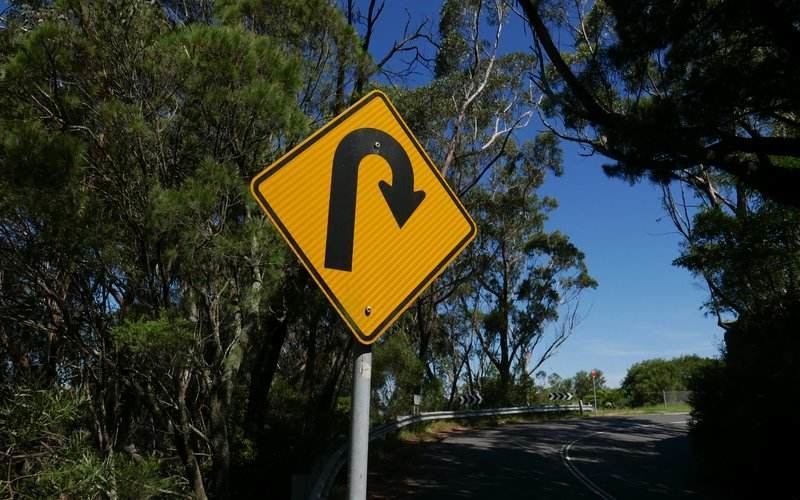When the Reserve Bank of Australia (RBA) slashed the national cash rate to the record low of 0.10% in response to Covid-19 in 2020, many Australians made the most of low interest rates by locking in a low fixed rate on their home loan. But with many of these fixed rate deals coming to an end this year, borrowers could find themselves rolling off from mortgages with a ‘1%’ in front, to variable rates with a ‘6%’ in front. Big ouch.
Since May last year, Philip Lowe and the RBA caught my attention.
Not only because I started working as a Finance Journalist here at Savings.com.au, but also because I too took out an ultra-low fixed interest rate that was set to expire in February 2023. Cue the worry, stress, and budgeting galore.
As a first-home buyer, it was pretty confronting to understand just how much the rate hikes would impact my finances as a whole. While paying more towards my mortgage was inevitable, it was hard to digest just how little I’d be able to put away into my savings pot. More to the mortgage = less to savings. And while my partner and I did build a savings buffer, it didn’t mean we wouldn’t feel the brunt of the RBA’s ten consecutive rate hikes.
Plus, with one to two more 25 basis point hikes tipped on the horizon, the worst isn’t over yet.
So this leads us to the all important question: what actually is the fixed-rate mortgage cliff, and how is it going to affect the economy this year?
What is the fixed-rate cliff?
When the cash rate dropped to 0.10% in November 2020, mortgage rates fell dramatically. Short-term fixed loan rates averaged as low as 1.95% in May 2021 for owner-occupiers - a deal mortgage holders just couldn’t resist.
Data from the ABS found banks financed around 1.2 million new home loans between January 2020 and October 2021, when fixed rates were remaining low.
CoreLogic Head of Research Eliza Owen said fixed term home lending historically comprised of around 15% of new home loans, yet this drastically changed in 2021.
“As fixed interest rates plunged to record lows, fixed term home lending surged to 46.0% of new mortgage commitments in July and August 2021,” Ms Owen said.
“The RBA October Financial Stability Review noted that about 35% of outstanding housing credit was on fixed terms.
“This included the fixed component of split loans, so not all of these fixed loans represent the entire debt value of housing purchases.”
According to the Financial Stability Review, around two thirds of the 35% of outstanding fixed mortgage debt would expire in 2023. Hence the term ‘cliff.’ Once a borrower's fixed rate ends, they will be hit by an unusually high jump in repayments - ten consecutive hikes' worth to be exact (at the time of writing), with more likely to come.
How many borrowers will be impacted in 2023?
According to the RBA, the number of Australians heading towards the cliff this year isn’t far off a million - over 880,000 fixed loan facilities are set to switch to higher variable rates in 2023. This equates to roughly $350 billion in credit rolling off from fixed to variable interest rates.

During a Senate committee last Wednesday, Dr Philip Lowe said some mortgage borrowers would face financial stress particularly if they hadn’t built up a savings buffer.
“The banks tell us that people with fixed rate loans – most of them – have been pretty cautious. They knew interest rates weren’t going to stay low forever,” Dr Lowe said.
“Not everyone is in that case, though. Some people have taken the low-interest rate to allow them to spend more and those people are going to face a lot more difficulty when interest rates go up by 3%.”
So what will monthly repayments look like for mortgage holders when they come off their fixed-rate?
Here’s a snapshot (based on ABS data):
| Average home loan size May 2021 | $549,000 |
| Average fixed rate May 2021 | 1.95% |
| Average variable rate 2023 | 5.45% |
| Monthly repayment under fixed term | $2,016 |
| Monthly repayment under new variable rate | $3,100 |
For homeowners coming off their fixed rate this year, their mortgage repayments will cost an extra $1,084 per month - not a small number by any means.
A recent survey conducted by AMP Bank revealed 69% are worried about meeting their mortgage repayments if interest rates continue to rise.
Recent analysis from the RBA highlighted the risks are high for a sizeable minority. At a cash rate of 3.6%, 14.6% of mortgage holders will have negative levels of household cashflow, leaving them at risk of defaulting on their loan. A further 8.1% will see their savings buffers decline by 60-100%.
While not all Aussie mortgage holders will find themselves in trouble, there are a handful of households that don’t have much excess savings at all. In fact, the household savings ratio declined for the fifth consecutive quarter to 4.5% - the lowest since September 2017.
Yet, in the RBA’s February Statement on Monetary Policy, they suggested some borrowers would need to start dipping into their savings account to afford higher mortgage repayments.
“Some borrowers may need to reduce non-essential spending, save less overall and/or draw down on accumulated savings to service their mortgages,” the RBA said.
“Some households with low savings buffers and high debt relative to incomes will have to adjust their spending sharply.”
For those who have little to no leftover cash lying around, this may mean making serious financial sacrifices e.g. missing out on medications, delaying car servicing, selling their home, and much more.
Insufficient serviceability buffers?
When the majority of the low fixed rate mortgages were written, the serviceability buffer rate applied was 2.5%. This meant, for example, that someone applying for a home loan of 5% p.a. was assessed at a rate of 7.5% p.a. to determine their ability to repay. The buffer was then upped to 3% from November 2021.
At the time of writing, there have been 350 basis points' worth of RBA rate hikes, meaning many home loans issued before then would have exceeded the serviceability buffer. The average fixed-rate borrower faces a 3.50% increase to the rate payable on their mortgage. This means many homeowners are venturing into uncharted territory with their mortgage and their ability to repay.
I’ll get a little personal here. In early 2021, I fixed my mortgage at a rate of 2.29% for two years. When I came off the fixed rate in February 2023, my rate jumped to 5.05%. With more rate rises lurking, it’s likely my loan will also exceed the 3% serviceability buffer.
To find out more on serviceability buffers, head to our article: Is it time to reduce the home loan serviceability buffer?
What economic scenarios will we see amid the fixed-rate cliff?
With the fixed-rate mortgage cliff looming on our doorsteps, there’s no doubt there will be multiple impacts on borrowers and the economy.
To get a better idea of what these specific impacts are, Savings.com.au spoke with PRD Chief Economist Dr Diaswati Mardiasmo to get her insights.
According to Dr Mardiasmo, there are different borrowing demographics to consider - those that have experienced rate rises before and those who have not.
“For a first home buyer who secured their loan when rates were incredibly low (prior to early 2022) and have not experienced rate rises before, knowing that their fixed-rate mortgage is about to expire will induce some anxiety – in terms of how they are going to cover their new repayments,” she said.
“For an owner who has held their house for a while, if they went on the lowest fixed rate for say 2-3 years and did not change the dollar amount paid monthly into their mortgage offset account, chances are they would have either built up a ‘back up’ mortgage offset account and/or budgeted for the higher cash rate (as the dollar amount paid monthly may not changed).
“This suggests that they would be slightly worried, but not as much as the first home buyer.”
If you tie in the rising cost of living (it seems as though each shop I’m spending more but getting less in my basket) along with the weight of higher debt, given some first home buyers bought into the housing market with deposits around 5%, what we have right now is not considered a “normal economy” as Dr Mardiasmo puts it.
“The weight of the higher debt and higher aggregated cost of living is much heavier at the moment,” she said.
Given the above, Dr Mardiasmo suggests we will see any of the following (whether singular, depending on the financials of the person/household, or in combination):
A) An increase in the number of people refinancing
As we’ve seen, trying to snag the lowest variable rate possible and refinancing to take advantage of cash back offers are all the rage and this will likely continue.
B) Households may tighten their purse strings further
Consumers will adapt and reevaluate their spending habits given rising interest rates and the current cost of living crisis. Households will likely cut spending on going out, entertainment, and retail. This is already evident in CommBank’s recent Household Spending Intentions Index (HSI) which decreased by 6.9% in January.
Dr Mardiasmo said a decline in household spending will have a multiplier effect on the economy.
“With demand decreasing, businesses can cut back hours or close and thus unemployment increases,” she said.
“If unemployment increases, then those unemployed will re-evaluate their budgets and demand for goods and services, and the whole cycle keeps on repeating.
“The end game of this however, is that with demand decreasing, then prices are forced to decrease as well (or else people won't buy). This will lead to our inflation rates declining also.”
C) Innovation can go a long way
Mortgage holders experiencing stress may look into other avenues to gain income or juggle their household budgets such as a second job, renting out their spare rooms to students/friends, or even group bulk buying. In 2021, the typical host on Airbnb in Australia earned $11,464 per year.
Some Australians are even taking up side hustles to make extra income on the side. This could include Uber driving, pet sitting, freelance jobs, or even selling your creative designs on online platforms.
D) Sell their homes
“For those whose option is to sell (and this is usually the very last option), they’re usually likely to let go of their property at a discount compared to what they would normally get,” Dr Mardiasmo said.
“So not entirely a loss, but less than what they would usually get.
“For example, they may have purchased the property for $500,000 and if they sold 12 months ago it would be $700,000, but they are willing to let it go at $650-$675,000.”
There is also the risk some homeowners may default on their mortgage.
When you are unable to make your mortgage repayments (start falling behind), it results in a mortgage default. The lender can choose to send you a default notice either on the day of the missed payment or wait for a period of 90 days or more. After receiving the default notice, you have a 30-day grace period to pay the outstanding amount along with any regular payments that are due.
Data released by financial services company Otivo revealed more than 1.3 million Australian households are now struggling to meet their repayments (and this was only after the February rate rise).
Theo Chambers, CEO and Co-founder of Shore Financial, said fixed-rate borrowers won’t feel an incremental jump, it will be one significant jump that will have an impact on household expenses.
“It’s going to be painful, surprising, and alarming for homeowners because they’ve had record low interest rates over the last few years,” Mr Chambers told the Savings Tip Jar podcast.
“A lot of those fixed rates are coming off this year to probably a variable rate of over 5% which means repayments are probably more than doubling in a 12 month period.
“There are definitely signs of stress amongst homeowners, given the RBA has started raising the cash rate more aggressively than ever.”
What can people do to prepare if their fixed rate is ending?
If you're on a fixed rate loan and approaching the roll off to a variable rate, the time to act is now. Here are a number of steps you could consider taking:
- Contact your lender and negotiate a lower rate - Don’t let your fixed loan automatically roll onto the variable rate - this is unlikely to be the lowest variable rate they have. For example, when I got my final home loan statement from the bank I was leaving, the variable rate would have been over 7% had I not negotiated with them! So, make sure you contact your bank and ask them for the lowest rate possible (typically the ones they reserve for new customers). Lenders’ strategy is to retain borrowers so they’ll likely be willing to have that conversation with you.
- Refinance with a new lender - So, your lender didn’t want to make a compromise? It may be time to investigate other options out there. Some lenders are eager to secure the business of refinancers, and are willing to not only offer discounted interest rates, but other features and benefits such as cashback offers. Someone with a $550,000 principal and interest loan at 6.10% would have monthly repayments of $3,333. By refinancing to 5.50%, monthly repayments would drop to $3,123 and they could save around $75,000 in payable interest over the life of the loan (30 years). You should start your research around two to three months before your fixed rate period ends.
- Take out another fixed rate - If you prefer the certainty of knowing your exact mortgage repayments, you can opt for another fixed rate. Be mindful that not all lenders will allow you to re-fix, so you may have to switch lenders anyway if you wish to do this. One thing to keep in mind is that fixed rates could leave you paying more interest than necessary. Westpac economists predict the RBA will slash rates throughout 2024 and 2025.
- Contact your lender's financial hardship team - A hardship team is there to help customers during tough times and offer options that may be available to you. This may include pausing repayments or changing the terms of your loan.
- Review your expenses and discretionary spending - Unfortunately your fixed rate is coming to an end, and you’ll be hit with higher repayments, that’s the stark reality. So, it may be a good idea to cut back on expenses in the mean time (e.g. Uber eats, shopping) and make sure you’re getting the best deals possible on all your major, regular payments (e.g. phone plan, health insurance, home and contents insurance, etc.)
Image by Erik Mclean via Unsplash

Ready, Set, Buy!
Learn everything you need to know about buying property – from choosing the right property and home loan, to the purchasing process, tips to save money and more!
With bonus Q&A sheet and Crossword!


 Harry O'Sullivan
Harry O'Sullivan
 Bea Garcia
Bea Garcia
 Denise Raward
Denise Raward
 Harrison Astbury
Harrison Astbury


